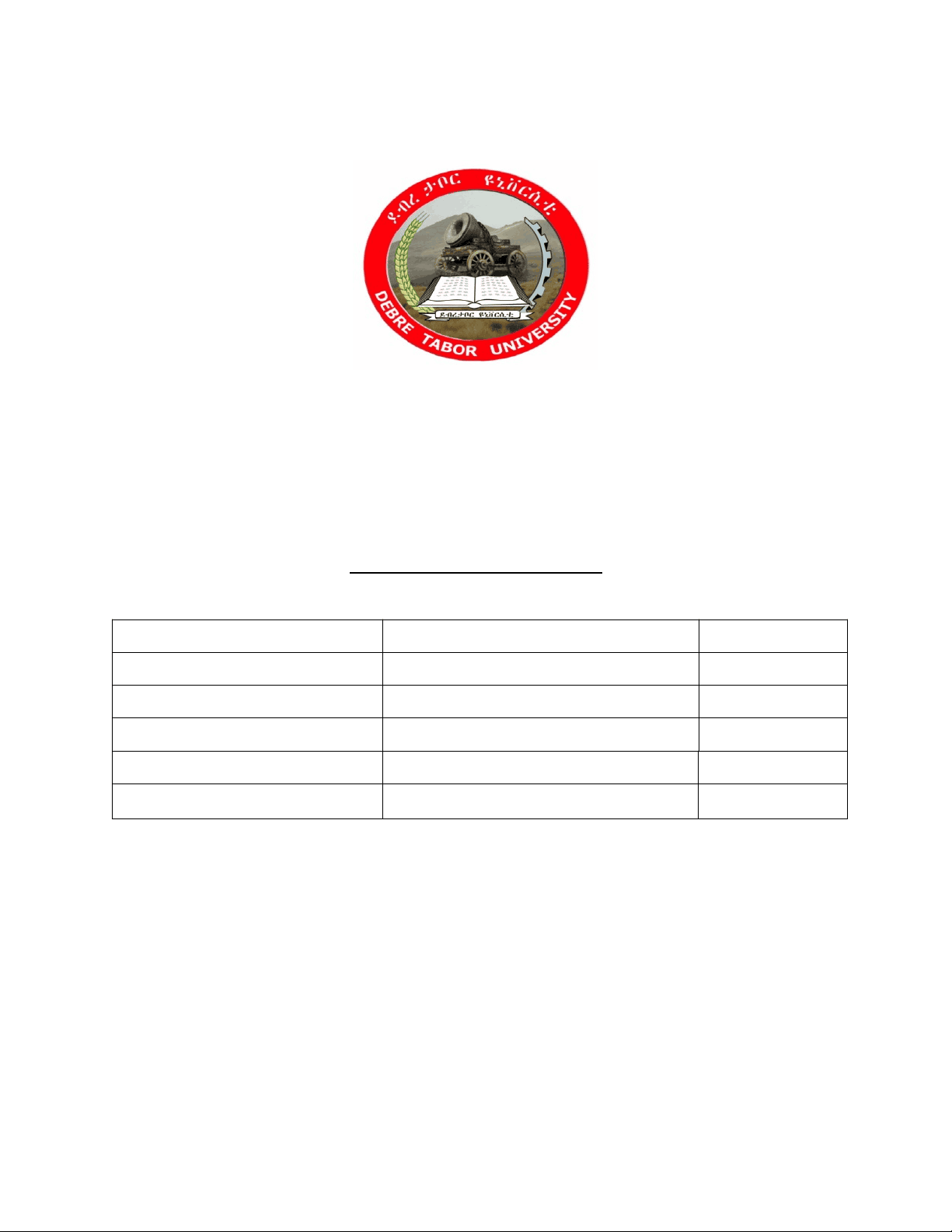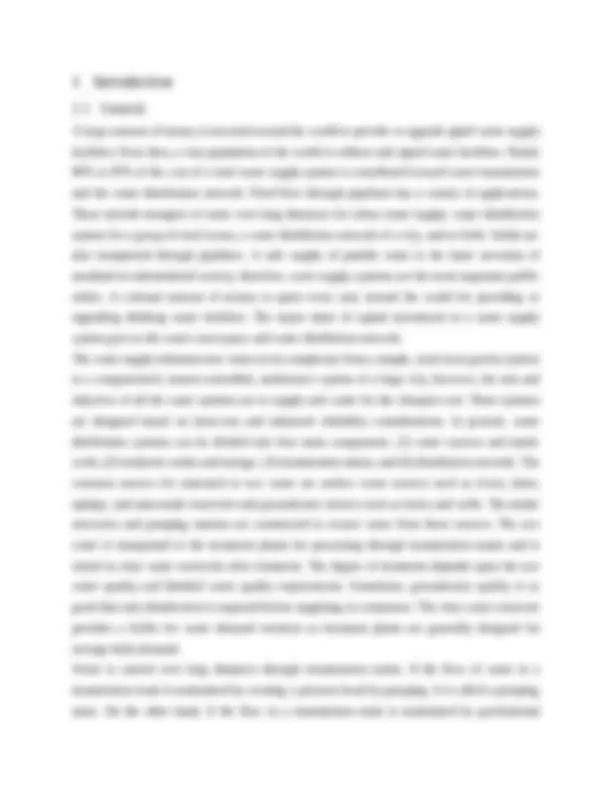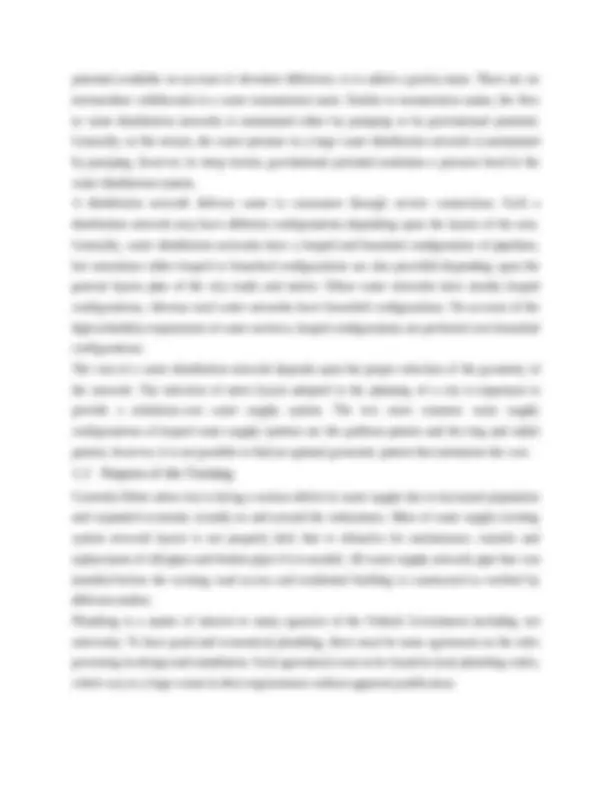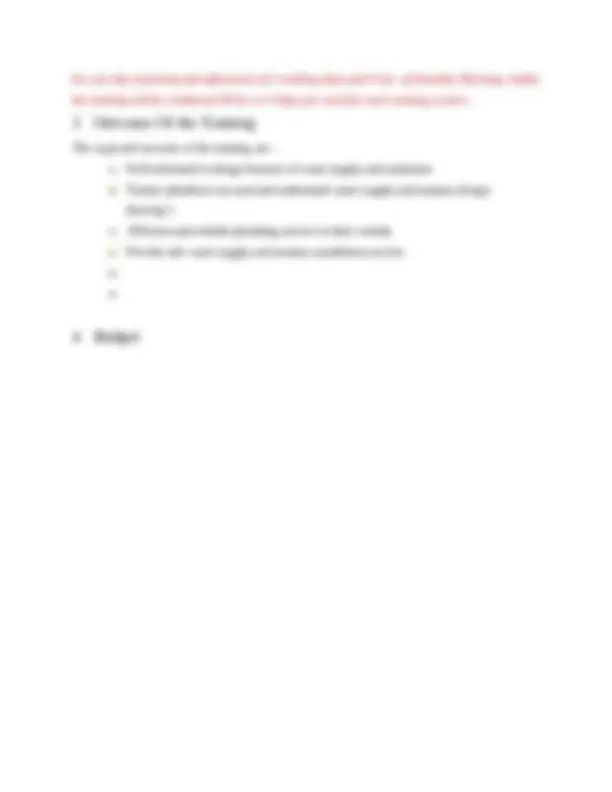






Study with the several resources on Docsity

Earn points by helping other students or get them with a premium plan


Prepare for your exams
Study with the several resources on Docsity

Earn points to download
Earn points by helping other students or get them with a premium plan
Community
Ask the community for help and clear up your study doubts
Discover the best universities in your country according to Docsity users
Free resources
Download our free guides on studying techniques, anxiety management strategies, and thesis advice from Docsity tutors
community service activities on waerCAD and WaterGums
Typology: Study Guides, Projects, Research
1 / 8

This page cannot be seen from the preview
Don't miss anything!





By: Name Specialization (MSc in) Phone No.
1 Introduction 1.1 General A large amount of money is invested around the world to provide or upgrade piped water supply facilities. Even then, a vast population of the world is without safe piped water facilities. Nearly 80% to 85% of the cost of a total water supply system is contributed toward water transmission and the water distribution network. Fluid flow through pipelines has a variety of applications. These include transport of water over long distances for urban water supply, water distribution system for a group of rural towns, a water distribution network of a city, and so forth. Solids are also transported through pipelines. A safe supply of potable water is the basic necessity of mankind in industrialized society; therefore, water supply systems are the most important public utility. A colossal amount of money is spent every year around the world for providing or upgrading drinking water facilities. The major share of capital investment in a water supply system goes to the water conveyance and water distribution network. The water supply infrastructure varies in its complexity from a simple, rural town gravity system to a computerized, remote-controlled, multisource system of a large city; however, the aim and objective of all the water systems are to supply safe water for the cheapest cost. These systems are designed based on least-cost and enhanced reliability considerations. In general, water distribution systems can be divided into four main components: (1) water sources and intake work, (2) treatment works and storage, (3) transmission mains, and (4) distribution network. The common sources for untreated or raw water are surface water sources such as rivers, lakes, springs, and man-made reservoirs and groundwater sources such as bores and wells. The intake structures and pumping stations are constructed to extract water from these sources. The raw water is transported to the treatment plants for processing through transmission mains and is stored in clear water reservoirs after treatment. The degree of treatment depends upon the raw water quality and finished water quality requirements. Sometimes, groundwater quality is so good that only disinfection is required before supplying to consumers. The clear water reservoir provides a buffer for water demand variation as treatment plants are generally designed for average daily demand. Water is carried over long distances through transmission mains. If the flow of water in a transmission main is maintained by creating a pressure head by pumping, it is called a pumping main. On the other hand, if the flow in a transmission main is maintained by gravitational
potential available on account of elevation difference, it is called a gravity main. There are no intermediate withdrawals in a water transmission main. Similar to transmission mains, the flow in water distribution networks is maintained either by pumping or by gravitational potential. Generally, in flat terrain, the water pressure in a large water distribution network is maintained by pumping; however, in steep terrain, gravitational potential maintains a pressure head in the water distribution system. A distribution network delivers water to consumers through service connections. Such a distribution network may have different configurations depending upon the layout of the area. Generally, water distribution networks have a looped and branched configuration of pipelines, but sometimes either looped or branched configurations are also provided depending upon the general layout plan of the city roads and streets. Urban water networks have mostly looped configurations, whereas rural water networks have branched configurations. On account of the high-reliability requirement of water services, looped configurations are preferred over branched configurations. The cost of a water distribution network depends upon the proper selection of the geometry of the network. The selection of street layout adopted in the planning of a city is important to provide a minimum-cost water supply system. The two most common water supply configurations of looped water supply systems are the gridiron pattern and the ring and radial pattern; however, it is not possible to find an optimal geometric pattern that minimizes the cost. 1.2 Purpose of the Training Currently Debre tabor city is facing a serious deficit in water supply due to increased population and expanded economic actually in and around the subsystems. Most of water supply existing system network layout is not properly laid, that is obstacles for maintenance, transfer and replacement of old pipes and broken pipe if it is needed. All water supply network pipe line was installed before the existing road access and residential building is constructed as verified by different studies. Plumbing is a matter of interest to many agencies of the Federal Government including our university. To have good and economical plumbing, there must be some agreement on the rules governing its design and installation. Such agreement is not to be found in local plumbing codes, which vary to a large extent in their requirements without apparent justification.
2.3 Training Strategy The training is going to be delivered through the basic approaches Lecture, Visualization, Practical Exercises, Participating trainees in presentations, and continuous practical and theoretical evaluations. The training consists of delivering basic knowledge of the design of water supply and sanitary to improve the awareness of Plumbers and create initial motivations towards the training. At the beginning of each content and session, there will also be a concept description of the practical sessions. The concept description will be followed by taking their real-world experience. The trainers will deliver scenarios of the trainees working environment to enable them to apply in their day-to-day activities. The trainees are also supposed to present their creativity for further understanding and motivating approach. Finally, at the end of each session, there will be a graded assessment based on the portions covered. For those trainees who completed the training a mechanism of an official certificate from the university will be arranged. 2.4 Training Participants No Name of woredas Number of Trainees Place of training Male Female (if any) Total
hrs. per day (morning and afternoon) of 3 working days and 4 hrs. of Saturday Morning, totally the training will be conducted 28 hrs. or 4 days per week for each training centers. 3 Outcome Of the Training The expected outcome of the training are: - Well-informed in design features of water supply and sanitation Trainee plumbers can read and understand water supply and sanitary design drawing’s Efficient and reliable plumbing service in their woreda Provide safe water supply and sanitary installation service 4 Budget